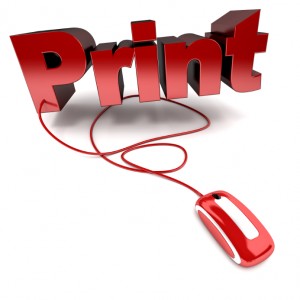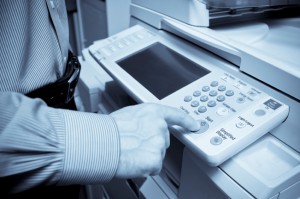At least once a month I’m asked the same perennial question: Caroline, how can we save money on print? How can print management help me with reducing our print budget? What print management solutions are there available for my budget? 
My response includes the following:-
- What aspects of print are you looking to cut back on?
- How many printers do you have in the building?
- What documents does the business generate?
- How often do your order ‘print’?
Now you start to get the picture. It’s not that easy to simplify the answer as there are many variables.
The printing of transactional business documents is a fundamental business process for many organisations and in spite of the drive toward paperless offices, companies in every industry generate reams of paper on a daily basis for record keeping, customer facing letters, direct mail and internal correspondence.
Unsurprisingly most companies I talk to are unaware of their printing costs. They have no idea what they are spending on print because it is unknown and not a monitored business expense.
When I ask them what their annual costs are I’m usually met with a blank stare.
A business cannot implement a print cost cutting strategy if the costs are unknown.
One of the main reasons, is that it is perceived as a necessary business process and therefore an ongoing cost to the business which doesn’t require to have a budget attributed to it.
How do I reduce my print costs – keeping it simple?
1/ Digital emails are uniformly used for communicating but do they really need to be printed and filed? By categorising (outlook) or labelling (Gmail) is a great way of indexing those all important emails for reference at a later date.
2/ Review before printing – Really do you need to print that document. It’s something I’ve had to work hard at myself as I hover over the ‘print’ button. Why am I printing this, what am I going to do with it and does anyone else need to read it? Therefore ask yourself do I really need to print it? Use the ‘preview’ before printing especially when it comes to spreadsheets they never fit onto an A4 unless you specify fit to one page or you make sure the orientation is correct. Otherwise ten pages of unwanted and unuseable print streams out and then gets binned.

3/ Recycle – that discarded bit of paper that you printed off one side only can be used for scrap notes and for doodling yes I know it sounds boring but how many times when printing something out do we notice a glaringly obvious mistake and then print the whole document again? When we only need to print the relevant page. I use these bits of paper like a montage and then sketch or doodle over the top of the print using a bright colour pen.
4/ Do you really need to print that document in colour? If it’s a draft document then print it out mono, check it and then print in colour.
5/ Switch off – rather than letting devices go into standby mode switch off before leaving the office. It’s all part of keeping costs down.
How do I reduce my print costs using print management software solutions?
1/ How many personal printers do you have spread across your organisation? Whilst the cost of personal printers has reduced considerably the cost of toner cartridges remains pricey. Opting for a MFPD (multi-functional print devices) using a managed print services option is a sure fire way of saving time and money.
2/ Optimise biometrics for printing using fingerprint or key card technology. If a document is sent to a local printer by mistake or staff print the wrong document or change their mind and want to cancel the print job this is easily done using secure print tracking software.
3/ Cut back on waste using print management solutions this allows staff to print only what they need on the right printer suitable for the document. Print software routes the document to a mono printer if it is black and white, colour to a colour printer.

4/ Manage your paperflow by having an effective document management system . This is an important step in ensuring a workflow pattern in the company. Document scanning software captures, indexes, archives and retrieves all your documents by creating a secure digital file cabinet.
5/ Track print costs by using print management software that enforces internal rules for staff reducing print volume and redirecting print jobs to the most cost effective device. Print tracking software shows where costs are being incurred and what is being printed and by whom. Costs are tracked across an entire company calculating the cost on the volume of print per person and by department.
There you have ten ways to reduce your print costs. There are others of course but as each organisation is unique I’ve covered the ones that I think are of the most use.






